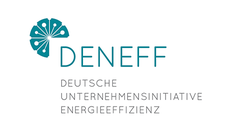Search eceee proceedings
Machine level energy data analysis – development and validation of a machine learning based tool
Panel: 4. Technology, products and system optimisation
This is a peer-reviewed paper.
Authors:
Samuel Carvalho, Limerick Institute of Technology, Ireland
John Cosgrove, Limerick Institute of Technology, Ireland
Julio Rezende, Limerick Institute of Technology, Ireland
Frank Doyle, Limerick Institute of Technology, Ireland
Abstract
Industrial energy consumption is known to be significantly high worldwide, reaching up to one half of the total energy in some countries and almost one third of the world’s consumed energy. Consequently, the industry sector is also responsible for a large share of greenhouse gases (GHG) emissions. Many recent manufacturing standards and methodologies have efficiency, environmental and social impacts as key aspects and concerns, in order to meet the demands of international agreements and regulations on these subjects. The ongoing development brought by Industry 4.0 and Smart Factories are the main demonstrations of the growing awareness of the importance of efficient and intelligent production. Data gathering, processing, analysis and benchmarking play a key role in this scenario, enabling a smarter and well informed decision-making process. In this context, energy consumption data extracted directly at machine level inside factories also show a significant potential for being a reliable source of process-related information, such as automatic production counting, consumption analysis, Overall Equipment Effectiveness (OEE) and costs identification. This paper presents a pilot implementation of a machine learning based application for the automatic extraction of useful insights from machine level energy data sets. The developed tool uses a K-means clustering algorithm in order to categorise energy profiles into production or idle periods, from which relevant Key Performance Indicators (KPIs) are calculated. A controlled experiment using Non-Invasive Load Monitoring (NILM) equipment connected to a CNC milling machine was performed in order to validate the approach, and the results are presented in this paper. The method has identified potential savings of up to 30% in an Injection Moulding machine and up to 25% in a Precision Engineering company, besides providing deeper understanding of the consumption profiles of machines in these sectors.
Downloads
Download this paper as pdf: 4-114-18_Carvalho.pdf
Download this presentation as pdf: 4-114-18_JohnCosgrove_Carvalho.pdf















